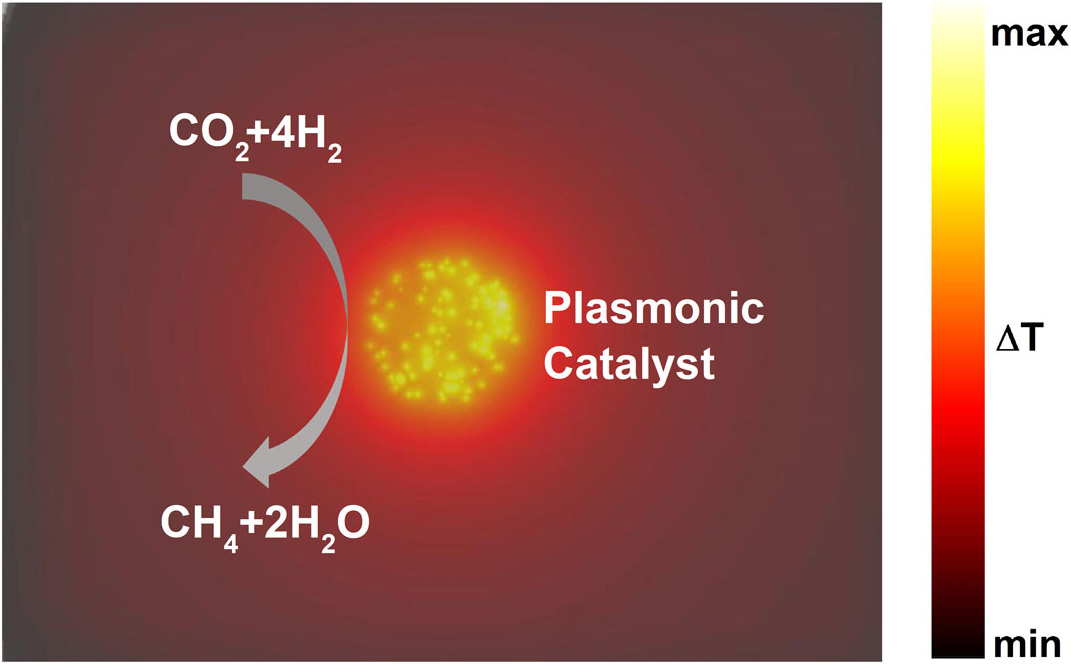Plasmonic catalysis
This project aims to further understand photo-thermal effects in plasmonic catalysts used to produce chemical fuels through solar-powered conversion.
We combine numerical calculations with experimental thermal tomography to study collective thermal effects in complex 3D arrangements of metallic nanoparticles and optimize their contribution to the catalytic process.

Motivation
With the rapid climate-change the need to produce clean energy and fuel has become an emergency. In this context, clean and cost-effective mass-scale production of fuels has wide implications in the reduction of the carbon footprint and hence global warming. Among possible approaches, solar-powered production of chemical fuels, such as methane through conversion of CO2 and H2 (Sabatier process and reverse water gas shift process), is showing great promises. In such processes, the conversion yield can be greatly increased through the use of plasmonic nanoparticle catalysts, by exploiting their ability to efficiently convert light into heat. In this project, we combine numerical calculations with experimental thermal tomography to study collective thermal effects and optimize the catalyst design. This project is a part of an European consortium of 12 partners under the umbrella of external pageH2020 SPOTLIGHT projectcall_made.
Research focus
- Developing a numerical simulation framework to study the temperature distribution in 3D random arrangements of nanoparticles.
- Designing the optimal plasmonic catalyst by fine-tuning its structural parameters such as materials, size, density of particles.
- Experimental validation of numerical simulations using temperature tomography measurements.
Project members
- Dr. Adarsh Vasista
Collaborators
- SPOTLIGHT consortium
- Guillaume Baffou
